EWR VJ 101 German Air Force
Production Time 9 to 10 weeks
Shipment is by FedEx, UPS or DHL International Express Courier with a normal door-to-door delivery time worldwide of within 2-3 business days after dispatch. Due to the current volatility of world fuel prices, the amount mentioned here is our best estimate for DHL and UPS and may be subject to change at the time of shipping.

Model Description: EWR VJ 101 German Air Force Wood Replica Scale Custom Model Aircraft
Manufacturer: EWR
Wingspan: 7.15 Inches (18.2 Centimeters)
Height: 4.5 Inches (11.4 Centimeters)
Scale: 1:36
Registration: XIVJ101
$259.50
Production Time 9 to 10 weeks
-
United States dollar ($)
-
Pound sterling (£)
-
Euro (€)
-
Australian dollar ($)
-
Canadian dollar ($)
-
Singapore dollar ($)
-
Swiss franc (CHF)
-
Japanese yen (¥)
-
Danish krone (kr.)
-
Hong Kong dollar ($)
-
Norwegian krone (kr)
-
Swedish krona (kr)
-
United Arab Emirates dirham (د.إ)
General Product Description
Our PlaneArt EWR VJ 101 German Air Force model exhibits unique, unrivaled quality and detailed design to come as close as possible to the accuracy of the actual plane. It comes as standard with a robust, durable base or stand which is available in a variety of different finishes designed to match your own personal requirements including solid wood, wood with polished metal supports or adjustable wood wall mount and will be ready within about 9-10 weeks from placement of order.
The EWR VJ 101 German Air Force model is made of the finest kiln dried renewable mahogany wood (commonly known as Lauan or Meranti) which has undergone many stages of carving and meticulous and careful sanding giving the beautiful, finished museum quality masterpiece. Many collectors and model connoisseurs demonstrate their preference for genuine handmade and hand painted mahogany wood models rather than plastic or die cast (diecast) alternatives due to the overall look and totally different feel of the item - we trust you will find the same. We can however, if required produce the same model in Solid Cast Resin so just click and contact us for further information. Our craftsmen and gifted artisans ensure that our finely handcrafted model airplanes match the precise blueprint details of the original aircraft. The paint scheme, markings and parts are closely matched, reflecting the original aircraft. This stylish top-quality desktop replica model will surely enthrall anyone who receives this as a gift and for sure one of the most appropriate and desirably collectable gifts for any aviation enthusiast or avid military jet aircraft collector whilst also displaying a perfect resemblance to the actual real life version.
There are many types of military jet aircraft, but the basic types are bombers, fighters, fighter bombers, spotter planes, transporters, patrol aircraft, trainers, and reconnaissance and observation aircraft. All these types of aircraft are used for different types of missions. If you're a fan of historic or present-day military aviation, our model aircraft will bring the excitement and character of these aircraft right into your own home.
If you require, we can also make the EWR VJ 101 German Air Force model in any other military, government or even private livery or colour scheme you require and if necessary, in a different size or scale. Just click here to contact us with a description or photographs of what you require, and we will let you have a quotation for the necessary customization by return email. We can also make bespoke scale replicas of any other private / civil commercial airliner or airliners, helicopter, glider, gliders with engines, military propeller, warplane jets, biplane, triplane, tail fin, spacecraft, rocket or NASA model you require in any airline, military or civilian livery or colors. We also produce model airships, blimps, dirigibles, blimps, boats, and ship collectibles. Wall plaque or seal for military, government or private customers. Again, by clicking here to contact us just let us know exactly what you need.
The EWR VJ 101: An Ambitious Experiment in Vertical Flight
In the annals of aviation history, certain projects stand out not just for their technical achievements but also for their ambitious attempts at pushing the boundaries of what was considered possible. The EWR VJ 101 is one such project, embodying the early explorations into VTOL (Vertical Take-Off and Landing) technology that sought to combine the agility of a helicopter with the speed and range of a fixed-wing aircraft. This experimental aircraft, developed during the early 1960s, represents a significant, albeit largely forgotten, chapter in the quest for vertical flight.
Origins and Development:
The EWR VJ 101 project was initiated against the backdrop of the Cold War, a period characterized by rapid advancements in military technology and a pressing need for versatile and technologically superior weapon systems. Germany, along with other NATO countries, was keen on developing an aircraft capable of vertical takeoff and landing to bypass the vulnerability of airfields to nuclear and conventional attacks. This led to the conceptualization of the VJ 101, undertaken by a consortium comprising three German companies: Heinkel, Bölkow, and Messerschmitt, which later merged into EWR (Entwicklungsring Süd).
Design and Capabilities:
The EWR VJ 101 was designed as a supersonic fighter capable of VTOL operations. It featured a unique configuration with two sets of engines: six Rolls-Royce RB.145 turbojets, where two were located in the fuselage for horizontal flight and four mounted on swiveling nacelles at the wingtips for vertical lift and transition to forward flight. This design allowed the VJ 101 to take off and land vertically like a helicopter, then transition to horizontal flight, reaching supersonic speeds.
The aircraft’s innovative design included automatic flight control systems to stabilize the transition between vertical and horizontal flight, a technological marvel for its time. Its maiden flight in April 1963 marked a significant milestone, proving that transitioning from vertical takeoff to supersonic flight and back was achievable.
Challenges and Termination:
Despite the VJ 101’s groundbreaking demonstrations, the project faced numerous challenges. The complexity of its design, coupled with the technological limitations of the era, presented significant hurdles. Issues with engine reliability, control systems during transition phases, and the inherent compromises in performance due to the VTOL design were persistent problems.
Furthermore, the strategic military value of VTOL aircraft began to be questioned as missile technology advanced, offering alternative means to counter the vulnerability of airbases. These factors, along with budget constraints and shifting priorities within NATO and the German government, led to the cancellation of the EWR VJ 101 project in the mid-1960s, after only two prototypes had been built and tested.
Legacy:
Though the EWR VJ 101 did not enter production or see operational service, its development played a crucial role in advancing VTOL technology and contributed valuable insights into the complexities of vertical flight. The project paved the way for future VTOL aircraft, including the famous Harrier jump jet and the more recent F-35B Lightning II, which embody the VJ 101’s dual capabilities of vertical lift and high-speed flight.
The EWR VJ 101 remains a testament to the ingenuity and ambition of its creators. It exemplifies a bold experiment in aviation, one that sought to redefine the possibilities of flight and laid the groundwork for future innovations in vertical takeoff and landing aircraft.
| Weight | 6 kg |
|---|---|
| Dimensions | 17 × 7.15 × 4.5 in |

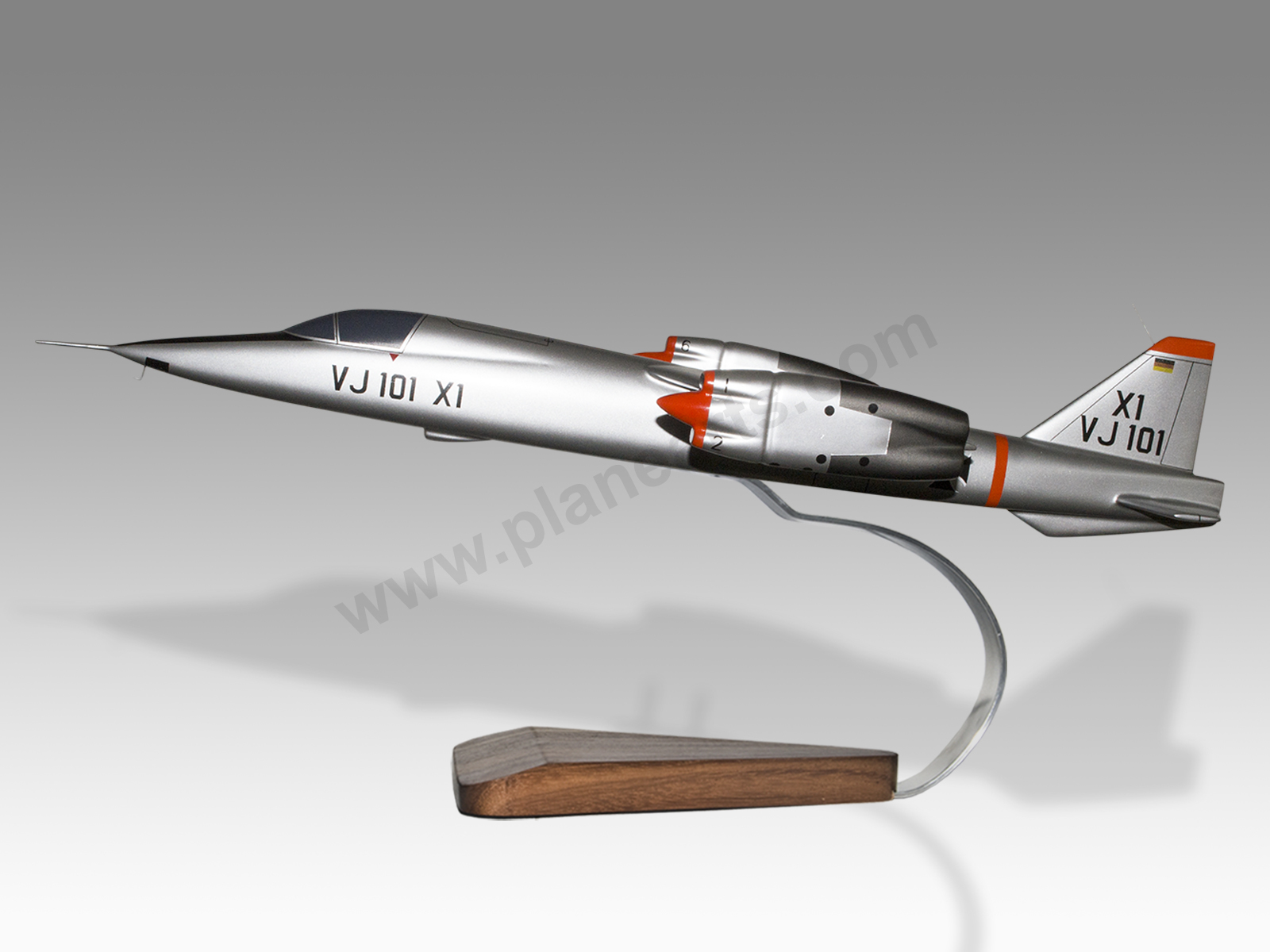
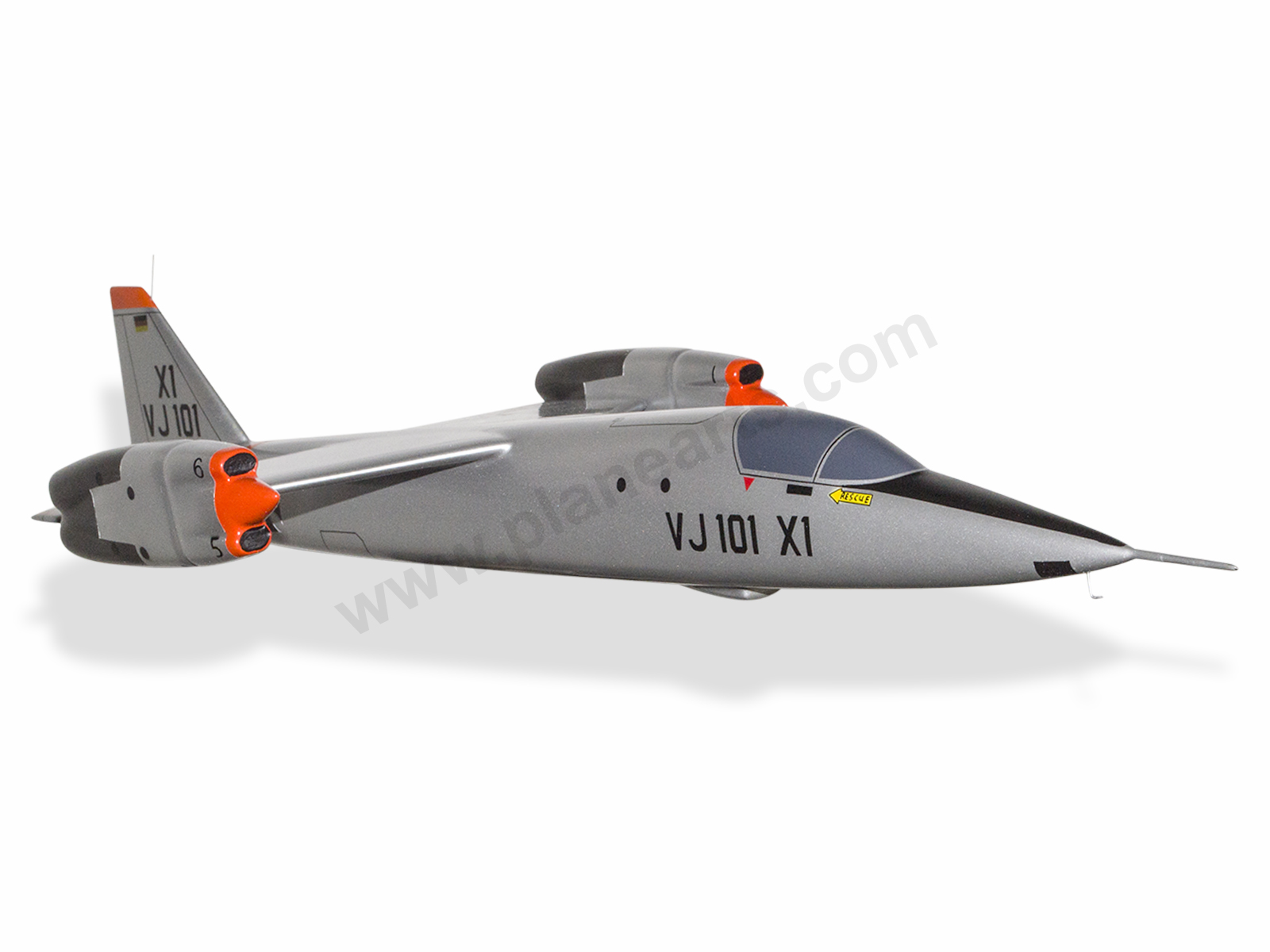
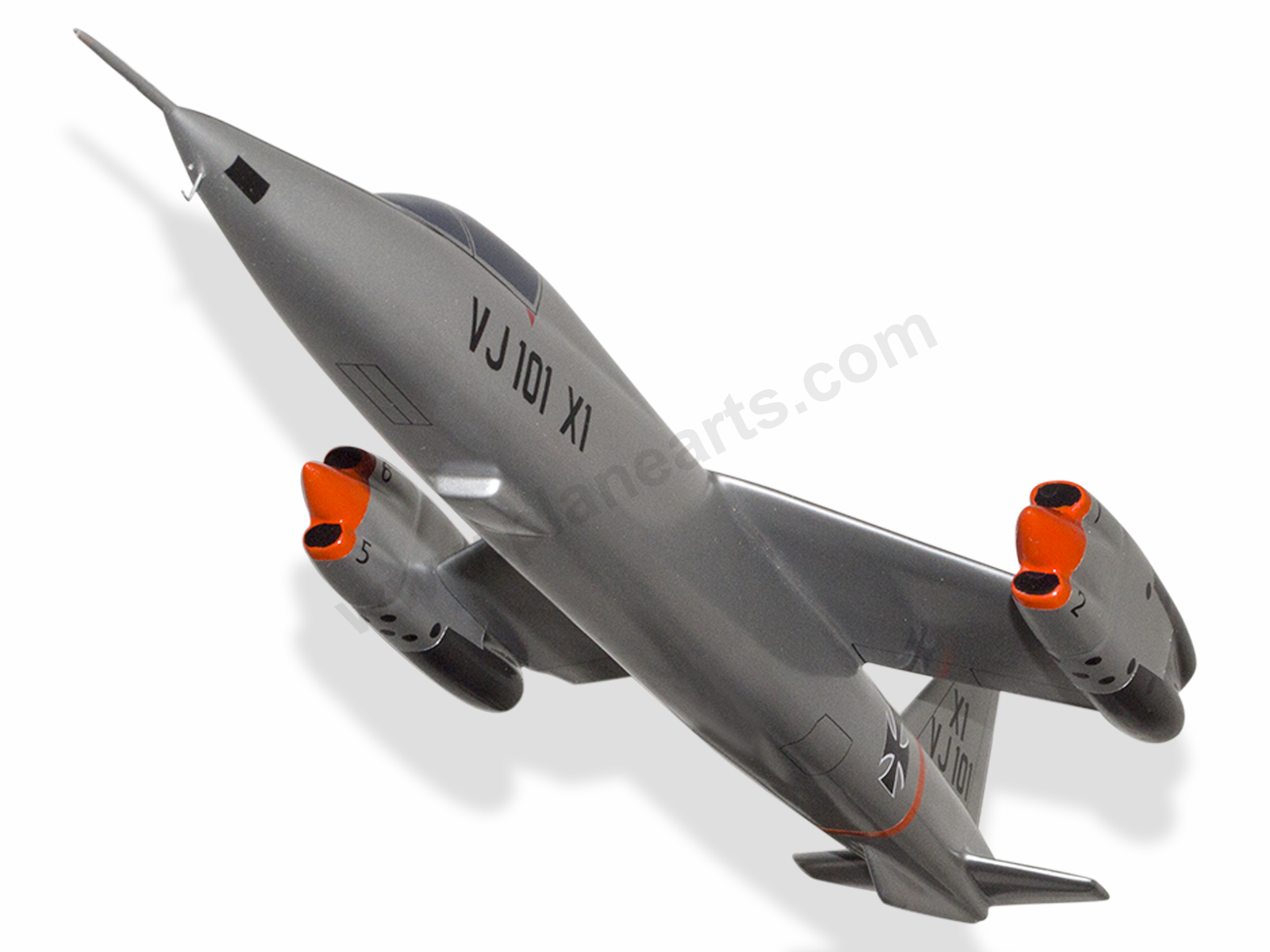
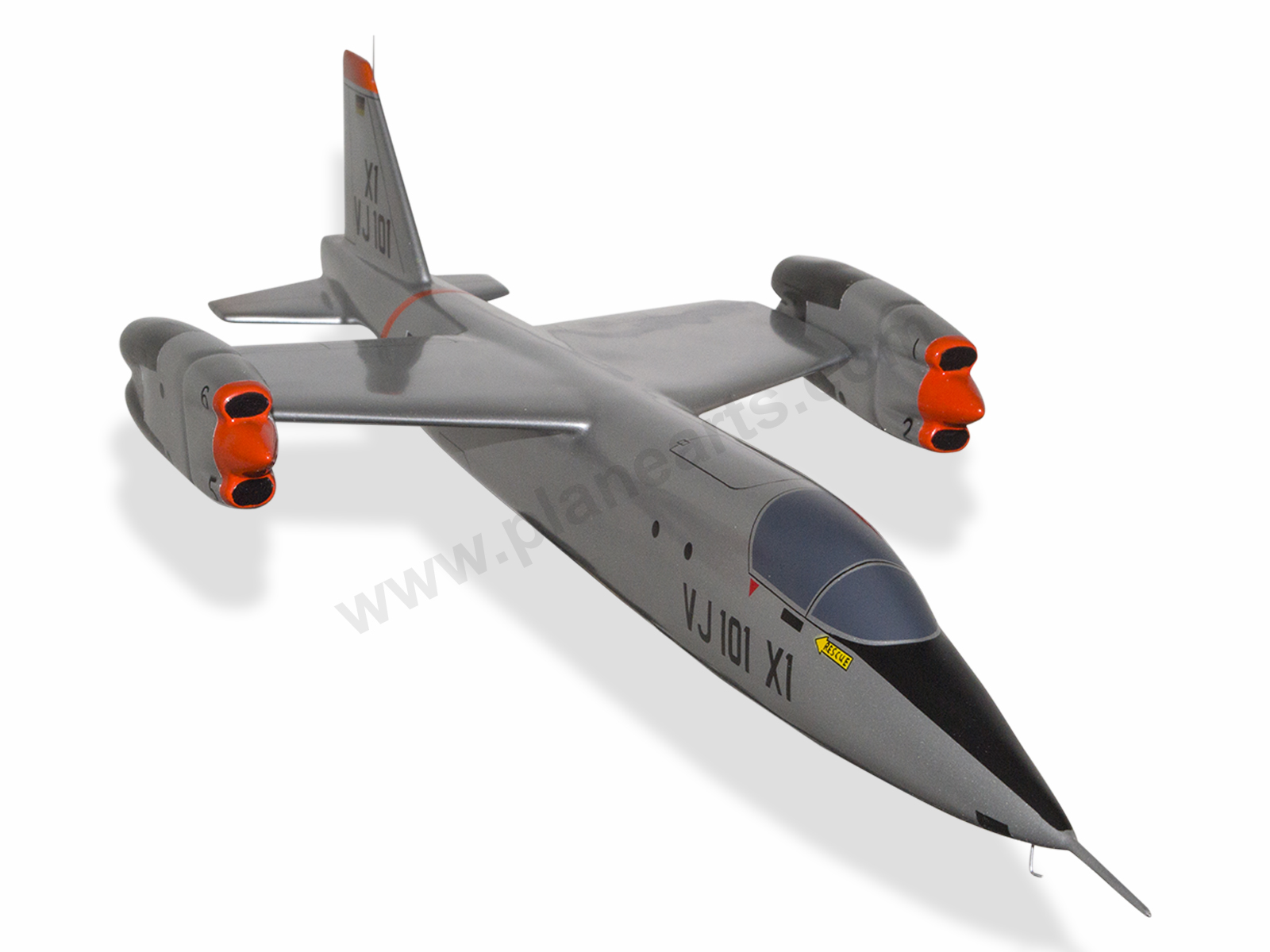
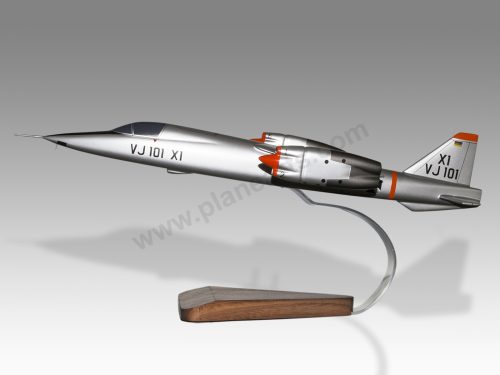
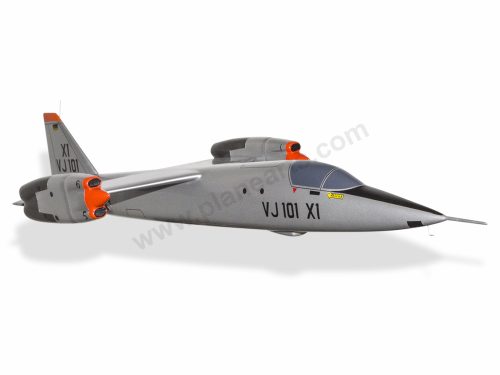

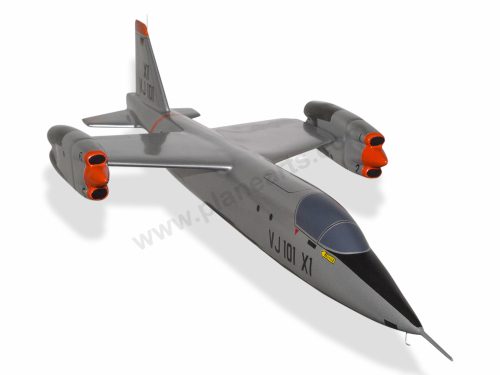
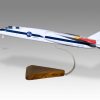

Reviews
There are no reviews yet.